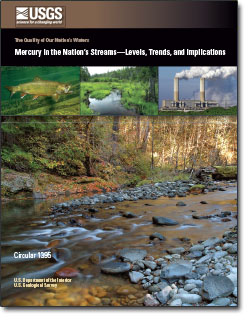The U.S. Geological Survey (USGS) released a report this week (entitled "Mercury in the Nation’s Streams—Levels, Trends, and Implications") that summarizes stream studies conducted by USGS since the late 1990s, and also draws on scientific literature and datasets from a variety of other sources. The report assesses U.S. streams in what the agency calls a "comprehensive, multimedia" manner, and provides insights about the importance of watershed characteristics relative to mercury inputs to those streams. The four major findings in the report include: (1) methylmercury concentrations in fish exceed the U.S. Environmental Protection Agency's criterion for the protection of human health in about one in four streams; (2) wetlands increase the amount of inorganic mercury converted to methylmercury (the form that bioaccumulates in fish); (3) existing mercury monitoring programs lack the design elements and data to link methylmercury levels to mercury sources; and (4) mercury emission reduction strategies need to consider global mercury sources in addition to domestic sources. Click here to see the USGS report summary and overview, and to link to the report, itself.

No comments:
Post a Comment